Mehu-Liisa Juice Extractor 11,0 L
Product number: 52011100
Legacy product code: TE311
149,00 €
Mehu-Liisa is an effective juicer, puree and steamer for berries, fruits and vegetables.
Delivery time 7-14 business days.
Deliveries are only within Finland (we do not deliver to Åland).
Description
Genuine and original Mehu-Liisa Juice Extractor from OPA. 10 year warranty.
The parts of the stainless steel Mehu-Liisa fit snugly together. Thanks to the spacious juice section, the juice will not drain into the water section. The thick base guarantees steady and efficient use of energy. Mehu-Liisa is suitable for all hob types, including induction. The lid of the Mehu-Liisa fits the base water boiler, so you can use it as a separate pot for all boiling purposes just like a normal pot.
You can make juice from all berries and fruits by either steaming or boiling. If you have a lot of berries, making steam juice with the Mehu-Liisa is the easiest way of making juice. Juice can also be used for making jellies, wine, purées and marmalade. The package comes with an extensive recipe booklet. The recipe booklet contains tips for juicing and making jellies, purées and wine. The parts can be washed in a dishwasher.
- The berries are placed in the steam section
- The steam softens the berries and separates the juice to run down into the juice section
- There must be water in the water section throughout the juicing time
- The juice is poured through a hose directly into bottles or a pot
You must be logged in to post a review.
Berry section volume: 11 L
Base section volume: 4 L
Base diameter: 24 cm
Juicer height: 41 cm
Freight weight: 4.39 kg
Mehu-Liisa use and care instructions (PDF)
Steam juicer care instructions
Wash the steam juicer parts before first use and after each use with warm water and washing-up liquid. For a more effective cleaning, you can use washing soda. Remove deposits caused by water from the water section by boiling sour berries (such as red currants, lingonberries or rowanberries) in the casserole or use a vinegar solution (1 dl of vinegar/1 l of water). Wash and rinse the water section well. When taking it to storage, check that the juice hose closer is not on the rubber part.
Steam juicing
You can make juice from all berries and fruits by either steaming or boiling. If you have a lot of berries, making steam juice with the Mehu-Liisa is the easiest way of making juice.
Berries used for juice can well be a little overripe because then the juice comes out of them the best. When making juice, you do not need to remove the berries from stems, but you have to carefully remove any bad or mouldy berries. Dusty berries should be rinsed. One kg of berries yields approximately 1 litre of juice. Use 200–400 g of sugar per litre of juice. You can also make juice without sugar. In this case, the juice must be kept in an optimum place or frozen. Sugar-free juice has a turbid colour.
You can create amazingly delicious juices by mixing different kinds of berries and fruits or rhubarb. For example, just a little bit of raspberry among currants will give the juice a sophisticated flavour. If you have a lot of berries to preserve at the same time, you can freeze part of the berries in large bags and later juice them.
Juicing berries and fruits with the Mehu-Liisa
- Pour the base boiler of Mehu-Liisa almost full of water and bring it to boil.
- Check that the steam juicer hose is tightly connected and that the closing clip is fixed to it.
- Pour clean berries to the perforated steaming part either in alternate layers with sugar (200–300 g/kg of berries) or without sugar. The bottom and top layers should be berries or fruit.
- Lift the steamerpot (=part with berries) first onto the juice section and then onto the water boiler. Close the lid tight.
- Make sure that there is continuously enough water for generating steam in the base boiler and that the water is boiling all the time. The water vapour softens the berries and fruit and extracts juice from them.
- You can drain the juice directly into hot clean bottles or first into a casserole. Draining to a casserole is easier, and the whole juice batch will have equal strength and sweetness.
- Pour the first litre of hot juice back onto the berries in the juicer so that sugar will dissolve more evenly, the structure of berries is broken and steam juicing becomes faster. You can also add sugar only in the casserole, 200–300 g
(2 1/2 – 3 1/2 dl) of sugar per litre of juice. Heat the juice drained to the casserole quickly once more before bottling it. - The steam juicing time of berries and fruits depends, in addition to the degree of ripeness, on the type of berry or fruit used. You can determine the suitable juicing time by looking at the colour of the berries and how juice is made. The juicing time for one steam juicing full of berries is approximately one hour.
How to bottle the juice
- Heat clean juice bottles in hot water or oven for 20–30 minutes.
- If you heat the bottles in the oven, put room-temperature bottles in the cold or lukewarm oven and set the temperature to 120 degrees Celsius. The heating time begins once the oven temperature is 120 degrees.
- Fill well-cleaned heated bottles to the top and immediately close them tight.
- Cool down and store the bottles in a dark and cool place.
Why can juice begin to ferment?
- There have been mouldy or unclean berries among the berries
- The juice has not heated up enough
- The bottles have not been completely clean
- The storage place is too warm
- The amount of sugar was not sufficient.
Slightly fermented juice can be boiled again. Add about 1–2 dl of sugar per litre of juice. Let the juice boil for a few minutes and carefully skim the froth.
Why does juice jellify sometimes?
- The berries have been raw
- Too little water has been used
- The juice was boiled for too long
Jellified juice can be “thawed” by putting the bottles in hot water.
Tips for using juice
Making jelly
You can make jellies from juice. Sour berries and fruits that contain a lot of pectin* are suited the best for making jelly. Pectin content is the highest in a little raw and just ripened berries and fruit.
Currants, lingonberries, cranberries, rowanberries, Chaenomeles fruit and apples are particularly good ingredients for jelly due to their acidity. Jelly also requires lots of sugar for the juice to congeal. If you intend to make jelly out of non-acidic, fully ripe berries, you need to add lemon juice and gelling agent to the juice.
How to make jelly
1 l of juice
700–800 g (8–9 dl) of sugar
- Use sugar-free steamed or boiled juice for jelly. The juice that came out first is the best for jelly.
- Measure the juice into a casserole and bring it to boil. Gradually mix the sugar in.
- After that, boil without a lid on low heat for 10–15 minutes without stirring.
- Make the jelly test: Drop a little bit of jelly onto a cold plate and pull a cleft in it with a spoon. If the cleft does not close, the jelly is ready. If the jelly does not congeal after 20 minutes of boiling, use gelling agent for assistance, such as *pectin.
- Let the jelly cool down for a few minutes, skim the froth and can in small, well-washed and heated cans. Close immediately.
- If the gel has not congealed in a couple of days, boil it again and add pectin (available from pharmacies) or gelling agent to it.
* Pectin
Pectin is a gelling agent that naturally occurs in semi-ripe fruit and berries. There is a lot of pectin in lingonberries, cranberries, currants, gooseberries, raspberries, sour apples and rowanberries, for example. Pectin only congeals suitably acidic and sufficiently sweetened preservatives. It is available as a powder at pharmacies. You can add some if the preservative is too soft. Heat the preservative again and add a mixture of 3/4 teaspoon of pectin, 3/4 teaspoons of citric acid and 2 teaspoons of sugar per kg or litre of presevative. Boil the preservative for a few minutes, stirring continuously.
If the jelly does not congeal
- The berries are too ripe
- The berries are low-acidic
- There is too little sugar
- The boiling time is too short
not enough water has evaporated - The boiling time is too long, *pectin has broken down
Making wine out of juice
You can also make wine from berry or apple juice. The easiest way is to buy a ready kit and follow the instructions. Tips for successful wine making can be found below.
Cleanliness
It is important that all equipment and supplies used in making the wine or in general in contact with the wine are clean so that the wine will not spoil or have taste faults. Washing with washing-up liquid is not enough; the detergent must also disinfect and it must not leave strange odours or flavours. You should use an appropriate detergent and disinfectant for cleaning to not only thoroughly clean, but also disinfect and kill bacteria.
Ingredients
Wine gets its flavour, odour and colour from the ingredients used for making it. You should make no compromise when it comes to the ingredients. This also applies to ready wine sets. The ingredients should be clean and must not contain rotten or woody or stem parts that would cause a bitter taste in the wine. If you are making wine from your own ingredients, it is recommended to use a proven recipe – you will not get a good wine by blindly mixing ingredients.
Fermenting agents
Fermentation, stopping it, wine clarification and preservation is managed by the fermenting agents included in the wine making kit or fermenting agent kit. Their quality is at least as important as that of the ingredients
Accessories
In order to make wine making worthwhile, it is a good idea to invest in high-quality wine making equipment.
A fermentation vessel with airlock of food-grade plastic, preferably 30 litres with carrying handles, is an absolute requirement for successful wine making. The clear wine is siphoned from one vessel to another without the sediments on the bottom coming along.
The siphon is also a very handy accessory for bottling. A handled corking machine inserts the cork tightly and straight into the wine bottle. The cork must be tight for the wine to be preserved. Corks with a minimum diameter of 21 mm but preferably 22 or 23 mm and length of 30–40 mm are recommended for genuine wine bottles. The temperature of the liquid is checked with a liquid thermometer. Before adding yeast, it is vital for the yeast to not add it to too hot liquid because yeast cells die at too high temperatures. A hydrometer is used for checking the sugar content of the wine liquid and wine, as the specific gravity measured by the hydrometer indicates it. At the start of fermentation, you should check the specific gravity of the wine liquid to avoid excessive sugar content, especially when making strong wine. The recorded starting value of sugar content is important information in investigating occasional fermenting problems. The hydrometer is also used for timely adding the fining at the end of fermentation. The alcohol content of the wine can also be calculated quite accurately using the start and end values of sugar content. Moreover, each type of wine has an optimum level of sweetness that is checked and adjusted using the hydrometer in conjunction with the back sweetening of the wine.
Finishing
Bottle the wine in bottles of your choice and make a label to your liking, if you wish.
Suitability of a few different types of fruit and berries for making home wine:
Bilberries give colour and are well-suited for mixtures. Bilberry contains some benzoic acid that acts as a natural preservative. Because of this, it can be difficult to start the fermentation of the wine.
Currants Redcurrant is a good basic berry for the wine maker. Blackcurrant and whitecurrant are excellent berries for wine. You should also mix other berries in, even though black currant alone also gives a good blackcurrant wine. Whitecurrant makes a good white wine, and it is also well-suited for mixtures. It is a good idea to use blackcurrant leaves to give flavour; you can freeze or dry them for the winter.
Gooseberries, both white and red, are excellent berries for making white wine and dessert wines as well as for mixtures. Gooseberry endures storage well.
Apples, preferably sour autumn and winter apples, are basic materials for home wine makers. Apples makes a good wine even alone, but the best results are achieved in mixtures and by mixing different varieties.
Rhubarb is an excellent ingredient for home wine; only use cut stems. The stems should be peeled, except if you want your wine to have the colour of a rosé. Preferably use early summer rhubarb, as older rhubarb can give the wine a bitter taste. Rhubarb contains oxalic acid, and to eliminate its harmful effect, add approx. 15 g of calcium carbonate to the wine.
Cherry is one of the best berries for wine, and it is well suited as an ingredient for madeira and port-type wines.
Black and sour cherries are the best because sweet ones do not contain enough acid. Rinse the cherries and remove pits.
Sea buckthorn berries are preferably used frostbitten.
Strawberry can be used alone, but rhubarb, for example, is an excellent match with it. Strawberry has a strong flavour and requires quite long storage. The berries should be ripe, and they are not rinsed; only remove rotten berries.
Lingonberry contains benzoic acid that tends to prevent fermentation, so it is not recommended at too high amounts for mixtures. Lingonberry is added in several batches when the wine is already fermenting.
Cranberries are picked late in autumn or early in spring (frozen). They also contain benzoic acid.
Steaming fruit and vegetables with the Mehu-Liisa
You can use the Mehu-Liisa for steaming fruit soft before pureeing them or steaming vegetables before freezing, for example.
Making purée out of berries and fruit
Apples, currants, gooseberries, plums, rosehips and many other berries and fruit make excellent purées.
The purées can be used in various ways: for porridges, custards and pastry fillings as well as with yoghurt and pancakes. The purée ingredients can be softened with the Mehu-Liisa Juice Extractor before puréeing. Food mills, food processors and blenders are excellent for puréeing. If you intend to use only sugar for preserving the purée, you should use 8–9 dl of sugar per kg of purée. You can use a preservative to reduce the amount of sugar. If you freeze the purée, you do not necessarily need any sugar.
How to make fruit purée:
approx. 3 kg of apples/crabapples/plums
3–5 dl of water
4–6 dl (350–500 g) of sugar per kg of purée
1 g of ascorbic acid per kg of purée
1/2–1 g of sodium benzoate per kg of purée
- Remove stems and bad parts from rinsed fruits.
- Cut up the fruits into the juicer steamer section. Add the water to the water section and steam the fruits soft under lid. Stir so that it will not burn. You can also soften the fruit sections in a steam juicer or microwave oven in two or three batches. If you soften the fruit sections in the oven, spread them on an oven tray or plate and pour some water on them. Cover the dish. The suitable oven temperature is 150–175 degrees.
- Purée the softened fruit warm in a food mill. Weigh the purée and bring it to boil.
- Add in sugar and boil over mild heat for a few minutes. The purée crackles when boiling, so use oven mitts to protect your hands when stirring the purée.
- Dissolve the ascorbic acid and sodium benzoate in a small amount of purée and only then to the entire batch. Stir well. You can replace the ascorbic acid with the juice of a few lemons.
- Fill clean heated jars to the top and close immediately.
- If you purée the fruits with a blender or food processor, remove cores before heating.
- If you are going to freeze the purée, add sugar to taste or leave it out altogether. You will not need a preservative when freezing.
Making marmalade
- Marmalades are firmer than purées, and they can be made from various berry and fruit purées. The cooking time is somewhat longer than when making purées.
- Similarly to jelly, slightly raw, sour berries and fruits that contain lots of *pectin are suited for making marmalade.
- The marmalade becomes firm when the purée is cooked long enough or pectin is added to it. Use 750 g–1 kg of sugar per kg of purée for marmalade.
Pre-cooking vegetables with Mehu-Liisa steamer before freezing
Nearly all vegetables can be frozen except for varieties with exceptionally high water content.
Before freezing vegetables are pre-cooked by bringing them quickly to the boil or by steaming them to stop enzyme activity. This ensures that the flavour is retain-ed after freezing. After pre-cooking cool the vegetables quickly in cold running water. As a result this pre-treatment, the colour of the vegetables is intensified and they are able to withstand freezing. Let the vegetables drip-dry before freezing.
If you pre-treat the vegetables by steaming, it takes 25% longer than quickly boiling them. The pre-boiling time is measured from the moment the water starts to boil again after the vegetables have been added.
The following cooking times are approximate
Peas chop and cook for 1 to 2 minutes
Beans clean and freeze either whole or in pieces, cook for 2 to 4 minutes.
Cauliflower chop and cook for 4 to 6 minutes
Broccoli chop (small florets can be frozen whole) and cook for 3 to 5 minutes.
Kohlrabi peel, cube or cook, pulp and cook for 2 to 3 minutes.
Brussels sprout freeze whole, remove bad leaves, cook for 3 to 4 minutes.
Nettle crush young leaves after bringing quickly to the boil, cook for 2 to 3 minutes.
Spinach freeze leaves whole or crushed, crush after bringing to quick boil, cook for 2 to 3 minutes.
Carrot chop, pulp and cook for 3 to 5 minutes.
Parsnip peel, cube and cook for 3 to 5 minutes.
Swede peel, cube and cook for 2 to 3 minutes or chop, boil until cooked and then pulp
Celery peel cube, cook for 3 to 5 minutes
Potato wash first early potatoes of uniform size thoroughly and cook for 3 to 5 minutes.
Assemble ready-made mixtures of vegetables to soups, for example:
- Carrot, lantern, leek, parsnip
- Cauliflower, broccoli, carrot
- Peas, corn, bell pepper
- Kohlrabi, thick leek slices

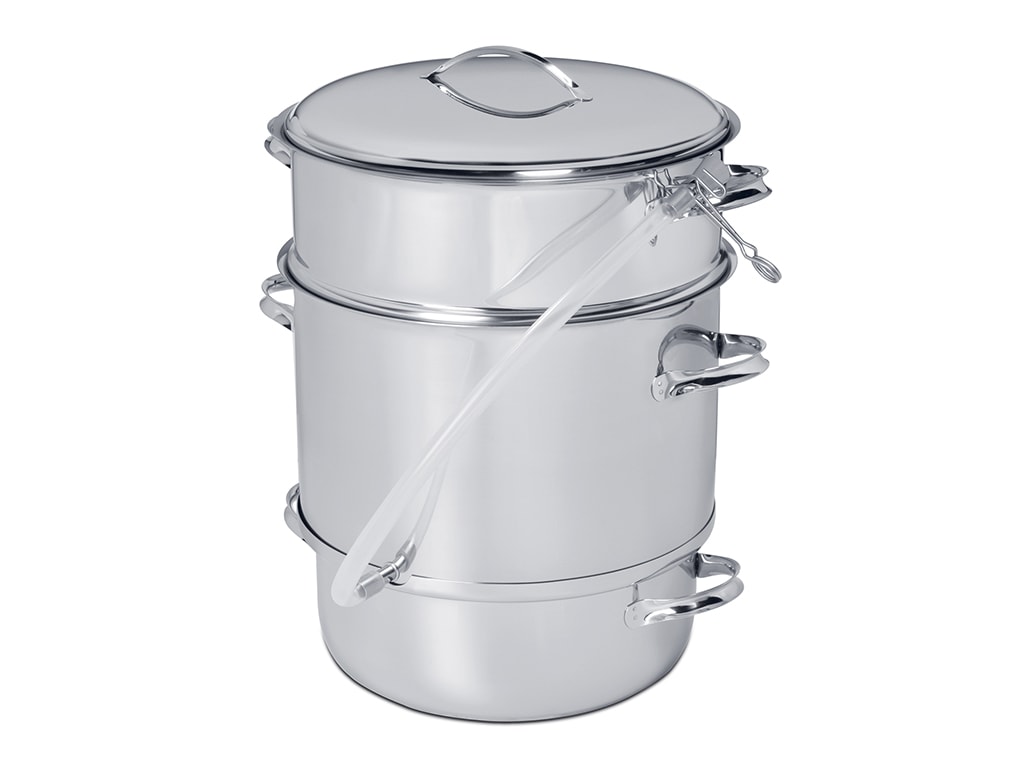
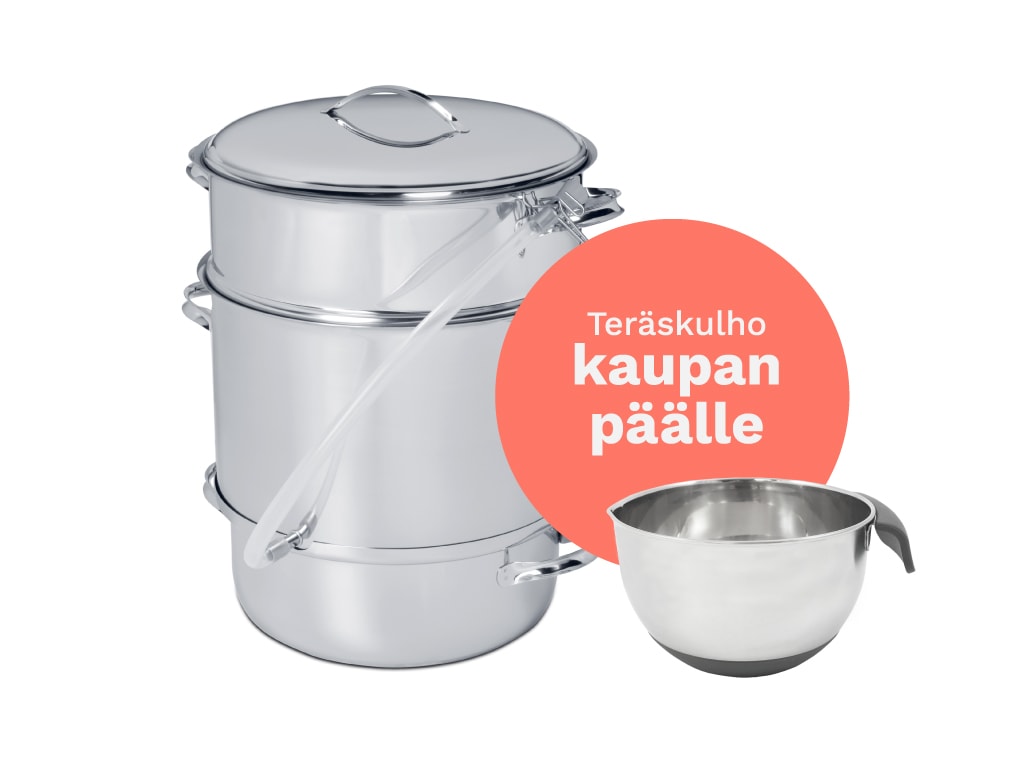


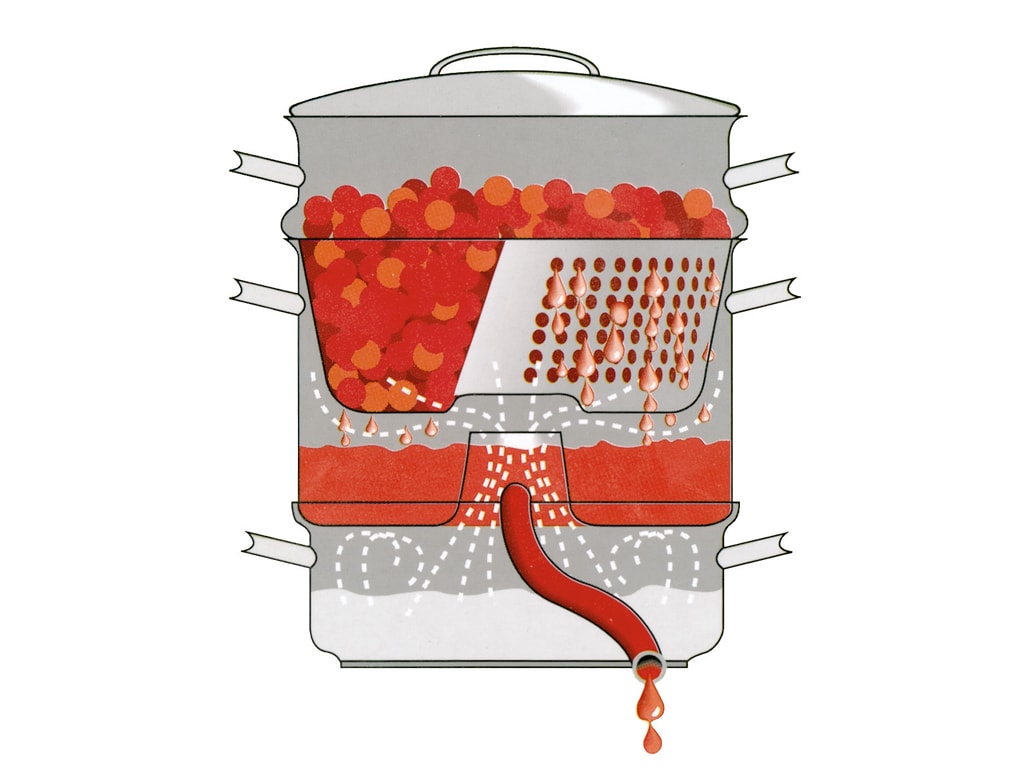
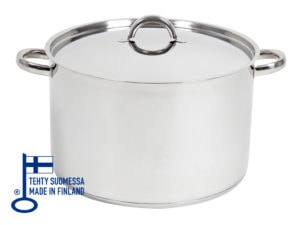
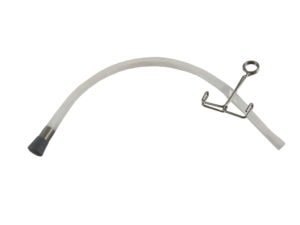
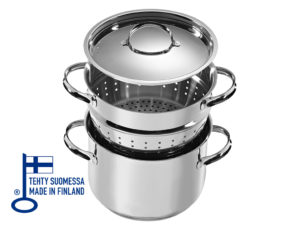
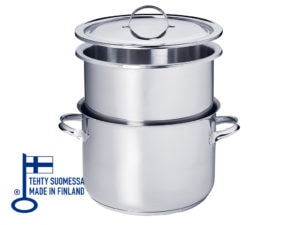
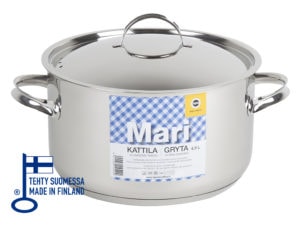
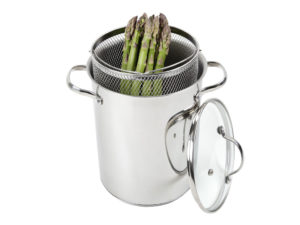
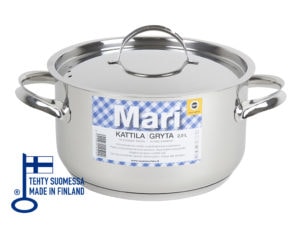
Reviews
There are no reviews yet.